Borneo, the world’s third largest island, is a vast land of dense, steamy jungles teeming with wildlife, much of which is found nowhere else on Earth. It comprises one of the planet’s most important biodiversity hotspots and is also home to a rich patchwork of ethnic and tribal groups and unique cultures.
The island is shared between the Indonesian state of Kalimantan, the tiny kingdom of Brunei and the two states of East Malaysia. While much of the interior of Borneo is remote and inaccessible, it is from the Malaysian states of Sarawak and Sabah that much of what is on offer can most easily be reached.
This is the first part of a special two-part feature on East Malaysia that will look at a few of the outstanding attractions of Sarawak.
Kuching: The Gateway to East Malaysia
While Malays are in the majority in peninsular Malaysia, in Sarawak, Malays and Chinese make up about a quarter of the population each and are outnumbered by various tribal groups. The largest of these is the Iban who make up around 30% of the population, although many smaller tribes are also represented. Sarawak offers perhaps the easiest chance to experience something of tribal life and it is this that draws many visitors to Malaysia’s largest and most sparsely populated state. On top of that, Sarawak also boasts two exceptional national parks which are unmissable for anyone with even a passing interest in nature and wildlife.
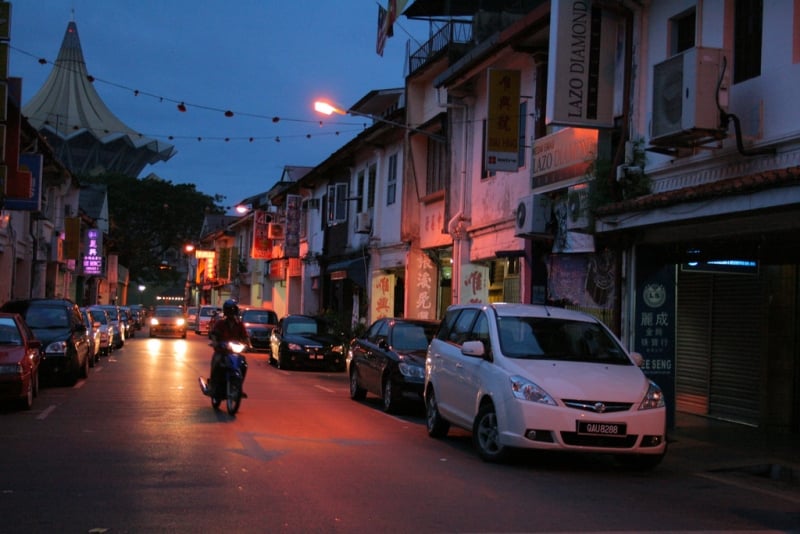
Image credit: Joshua Eckert
Most visits to Sarawak begin in the well-connected and friendly capital city of Kuching and this is an excellent place to linger for a few days while you acclimatise to East Malaysian life. The most attractive and atmospheric place to stay is Chinatown, near the Sarawak river, and here you will find a number of bars and restaurants which you should take advantage of before heading off to explore the interior – where eating and drinking options will be much more limited.
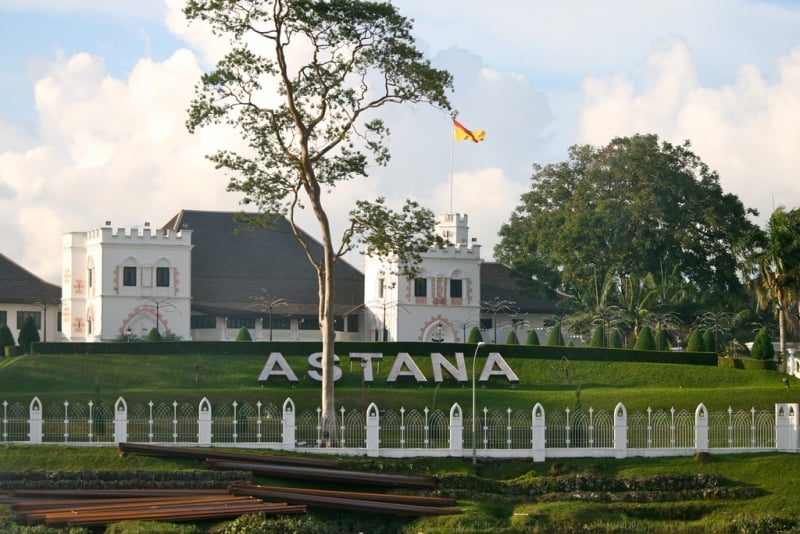
Image credit: Davida De La Harpe
Along the river is a promenade which affords views of the Astana on the far bank, a palace built by Charles Brookes, the second ‘White Rajah’, as a wedding gift to his wife. This building is now the official residence of the Governor of Sarawak and it is possible to take a small boat across the river to see it at close hand. However, it’s probably not a good idea to linger too long by the waterfront as the river is known still to contain a population of wild crocodiles.

Image credit: gendot united
The promenade is lined by a row of shops, known as the ‘Main Bazaar’, where you can pick up tribal handicrafts as well as kek lapis Sarawak, a colourful local type of layered cake. There are plenty of opportunities to visit local tribes on day trips from the capital and here you will find several agencies offering guided tours.
Just out of town is a ‘tribal village’ visitor centre showcasing tribal life and if you are interested in learning more about tribal culture, you should also find time to visit the excellent Ethnology Museum which features further educational displays. On the ground floor, there is a collection of stuffed Bornean animals which serves as a rather grim introduction to the island’s fauna. One of the more bizarre exhibits is a ball of human hair and a watch that were pulled from the stomach of a crocodile, all that remained of the animal’s final victim.
Bako National Park: Unique Wildlife and Plants
Before leaving the Kuching area in search of adventure in Sarawak’s interior, no visitor should miss the chance to spend a few nights at the isolated Bako National Park, less visited than some of Malaysia’s more famous national parks but surely one of the country’s most compelling. Although only a 40km bus journey from Kuching, even reaching the tiny park can be something of a quest. The bus drops visitors off at a dock from where it is a short walk past signs stating ‘beware of crocodiles’ to the small boats for the final leg of the journey.
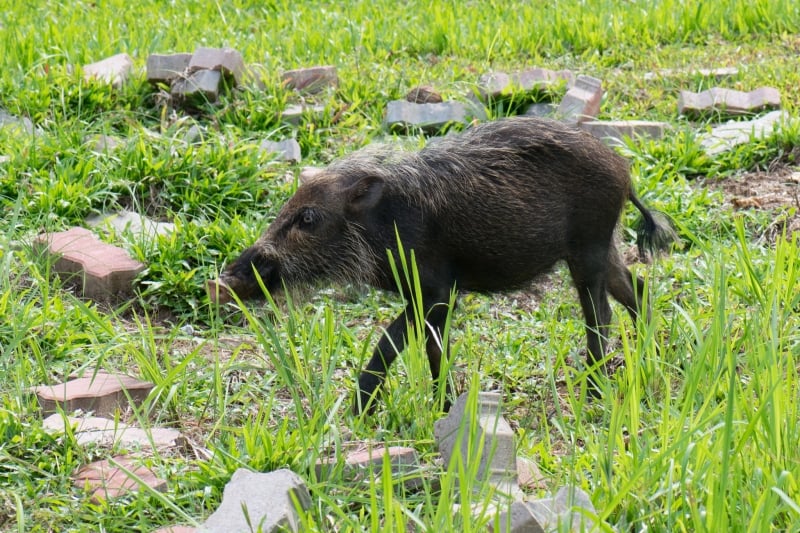
Image credit: Thomas Quine
Accommodation in the park is a collection of basic huts of various sizes surrounding the visitor centre and even walking from the restaurant to your cabin, you are likely to encounter families of Bornean bearded pigs and troops of marauding macaques that will boldly steal food from your plate, given half a chance.
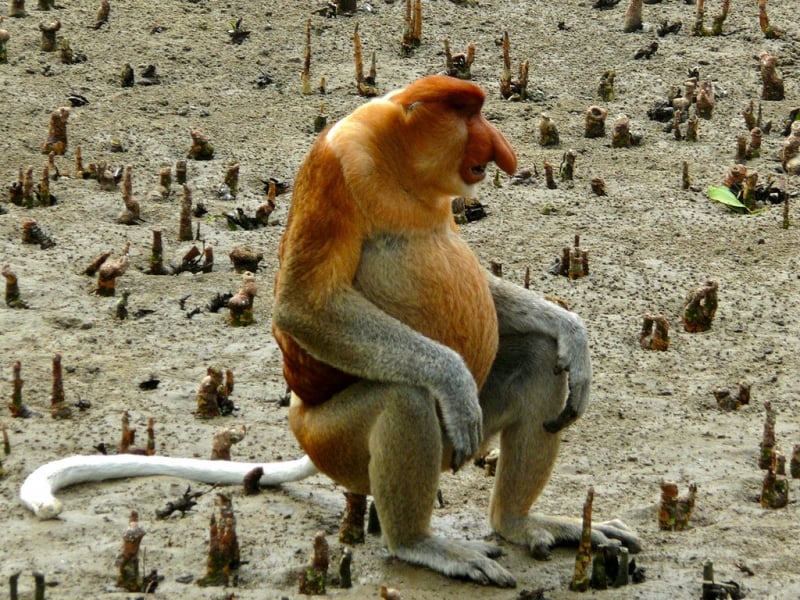
Image credit: Bernard DUPONT
There are many walks available for almost any ability and you stand a good chance of coming face to face with the park’s star attraction, the endangered pot-bellied, long-nosed proboscis monkeys, endemic to Borneo.
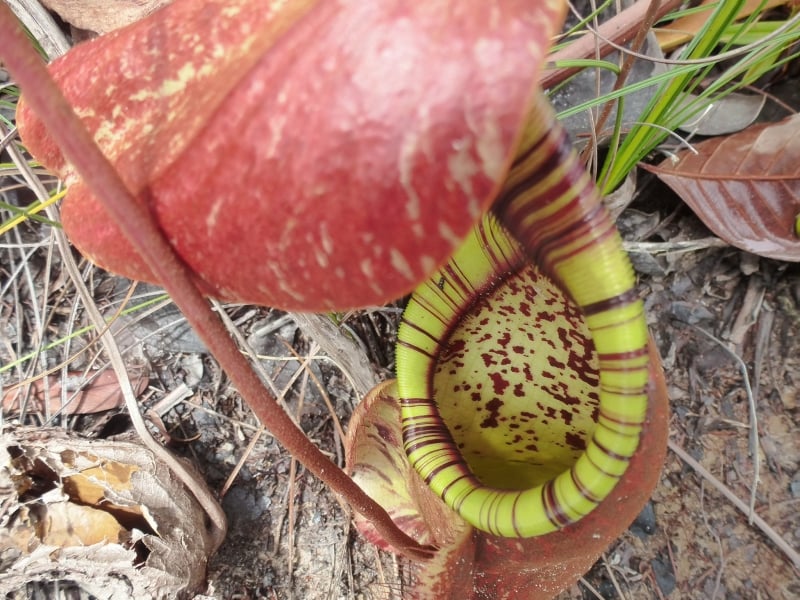
Image credit: Igor Mróz
One highly-recommended trail takes you through seven distinct types of vegetation and you will be able to look out for several species of Nepenthes, tropical pitcher plants, which grow along the path.
Everybody should join at least one night walk, an eerie trek into the forest after nightfall which offers the chance to catch glimpses of a host of creepy nocturnal wildlife including tarantulas, snakes, stick insects and frogs, as well as patches of glowing phosphorescent fungus. Bear in mind that it is best to book your stay at Bako in advance since if the park’s accommodation is fully booked, you won’t even be allowed to board the boat to the park and instead will simply have to return to Kuching.
The Interior: Tribal Cultural Immersion
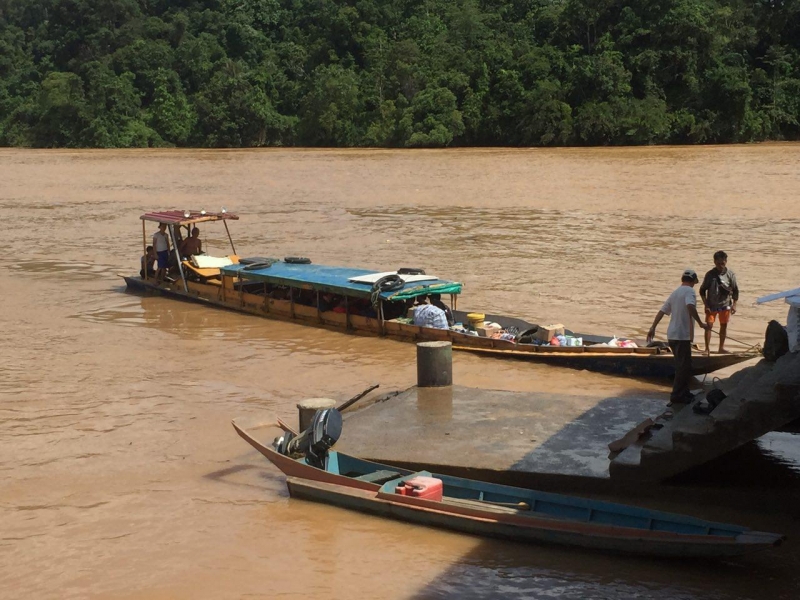
Having spent a couple of nights at Bako National Park, more intrepid visitors to Sarawak might feel ready to take to the waterways of the interior to set off in search of the tribal peoples who depend on Sarawak’s network of rivers for transport and communication.
The starting point is the town of Sibu, the gateway to the Rejang River, accessible by bus or plane from Kuching. From here, boats leave daily for Song, a small town further upriver and from where it is possible to strike out in search of some of the lesser frequented dwellings of the Iban tribe.
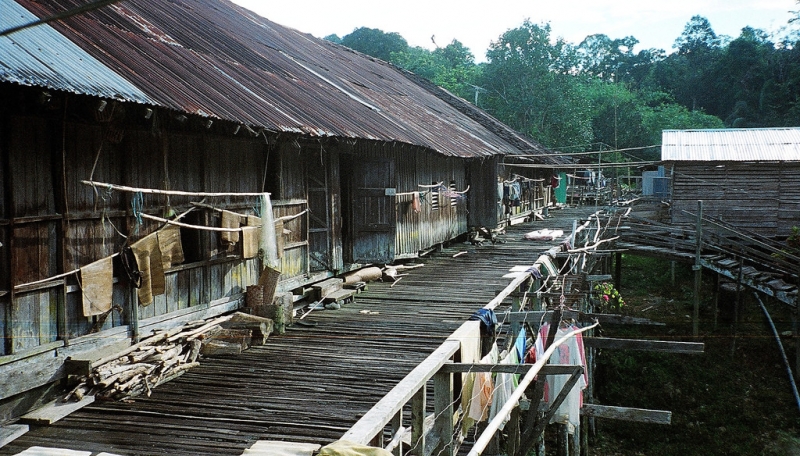
Image credit: Paul White
Iban people live in traditional longhouses which can be spotted all along the banks the river. Longhouses contain entire communities and some of them can reach over a kilometre in length. Inside, the longhouse is divided into separate housing units for each individual family and the chief has overall responsibility for the affairs of his longhouse. Until only a few generations ago, the Iban were notorious head-hunters, and many longhouses are still adorned with heads taken from enemies in battle.
From Song, a daily boat heads up the Katibas River, a tributary of the Rejang, terminating at a traditional Iban longhouse. Here, infrequent visitors will be received by the village chief and will be escorted on a tour of the village before spending the night in the longhouse. Here, very few of the older people speak any English and the chief himself only knows a few words, but many of the younger members of the tribe are keen to practise their English skills with the rare foreign visitors who make it this far. The trip affords a fascinating insight into modern tribal life deep in the jungle where old traditions are still followed but where younger members of the tribe now all carry smartphones and aspire to travel abroad to study, much like in many other places.
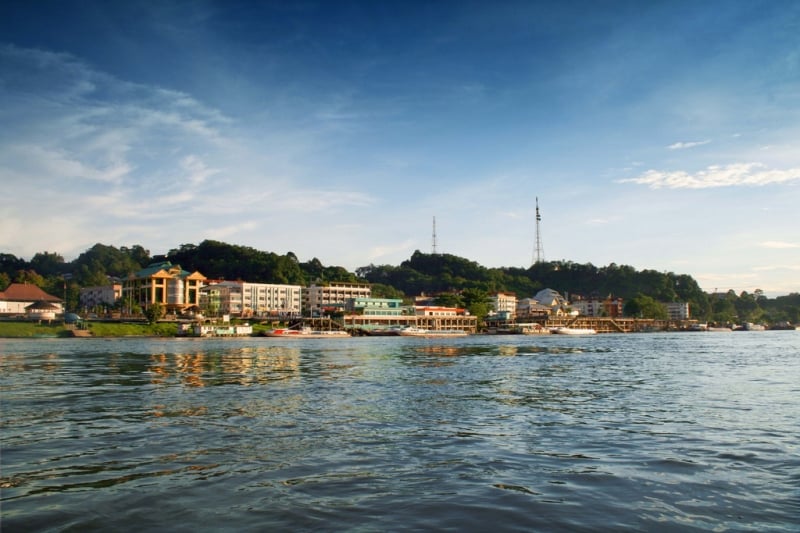
Image credit: Howe Kee Wong
After Song, the next town is Kapit. You will find yourself sharing the passenger boat with elderly tribal ladies bearing traditional tattoos on their arms and faces as you progress steadily up a river bordered on both sides by thick, impenetrable rainforest. At Kapit, foreign visitors wishing to proceed further upriver to Belaga will need to acquire a permit – although this is rarely checked. The journey from Kapit to Belaga includes an unnerving stretch of river known as the Pelagus Rapids, a fast-flowing section which has only recently become safely navigable with the arrival of modern reinforced passenger craft. Belaga lies deep within the interior of the Sarawakian jungle and is a popular base from which to organise further excursions into the surrounding area to visit other tribal groups.
Once you’ve had enough time in rural Sarawak, irregular jeeps run from Belaga along an erratically maintained track and, assuming the route is passable and hasn’t collapsed, will drop you at the main road. From here, you will be able to flag down a bus to complete the journey back to civilisation and the coastal town of Miri.
If you have time, you will probably wish to dawdle for a day or two in Miri, enjoying the wide choice of dining options that was unavailable along the river. If you still haven’t had your fill of tribal encounters, flights depart from Miri to the remote Kelabit Highlands on the Kalimantan border, a place offering jungle trekking and the chance to meet minority tribal groups not present in the rest of the state.
Gunung Mulu National Park: Deer Cave and The Pinnacles
Miri also offers the easiest access to Sarawak’s other premium attraction, the spectacular Gunung Mulu National Park. Before the airport was built, the only way to reach Mulu was an arduous day of travelling up another network of rivers, involving several changes of boat. While it is still possible to undertake this journey, it is now much cheaper and faster to fly – and from Miri, the plane hardly seems to have taken off before it begins the descent toward the runway, affording glimpses of the gaping entrance to Deer Cave as it comes into land.
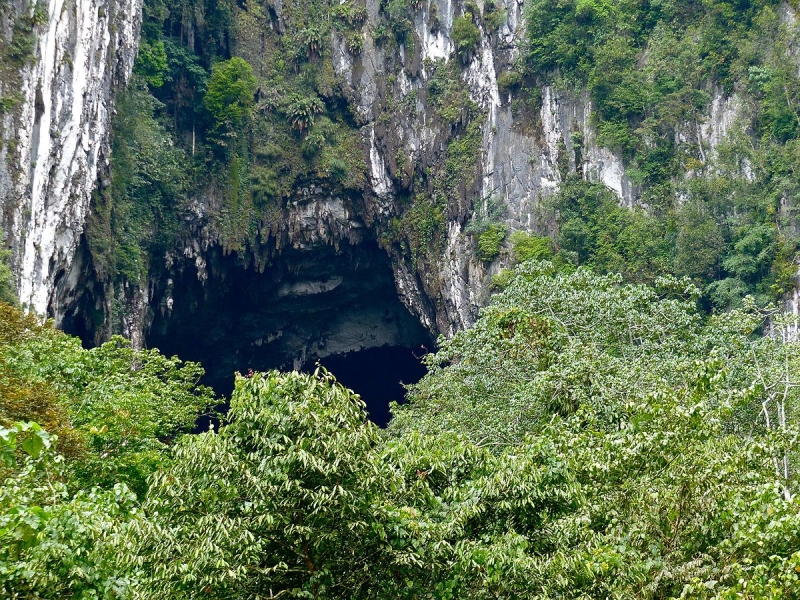
Image credit: Bernard Dupont
While Mulu is home to the usual array of Bornean flora and fauna, it is as much for the unique geological features that people make the journey. The centrepiece of Mulu’s attractions is the immense Deer Cave, one of the biggest caves in the world and home to a colony of around three million bats. The tons of collected guano – bat droppings – in the cave have created an entire underground ecosystem, and every evening, visitors to the park gather at a special viewing point in the hope of witnessing the spectacle of the bats leaving the cave in balletic waves as they seek to elude bat hawks on their way out for their nightly hunt.
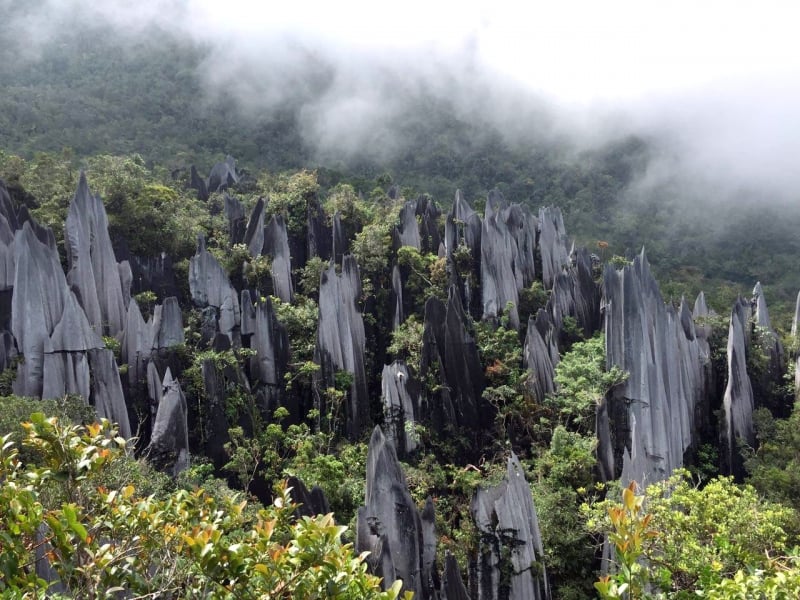
Mulu’s other outstanding draw is a series of karst structures high up on the top of a mountain, known as The Pinnacles. The two-day expedition to reach them is only for the fit and iron-nerved. The first part of the journey involves a gentle 9km trek through the jungle to a cabin where you spend the first night. Guides will not take people up if the conditions are unsuitable and, due to the unpredictable weather in Mulu, there is often a certain amount of anxiety as groups wait until the last moment to discover whether they will be permitted to make the ascent.
Once the guides make the decision to allow the attempt, participants must climb quickly. The path is steep and there are certain checkpoints that must be reached within a time limit. Failure to reach each checkpoint will result in your guide turning you back without attaining the summit as you won’t have enough time to reach the top and descend again during daylight hours.
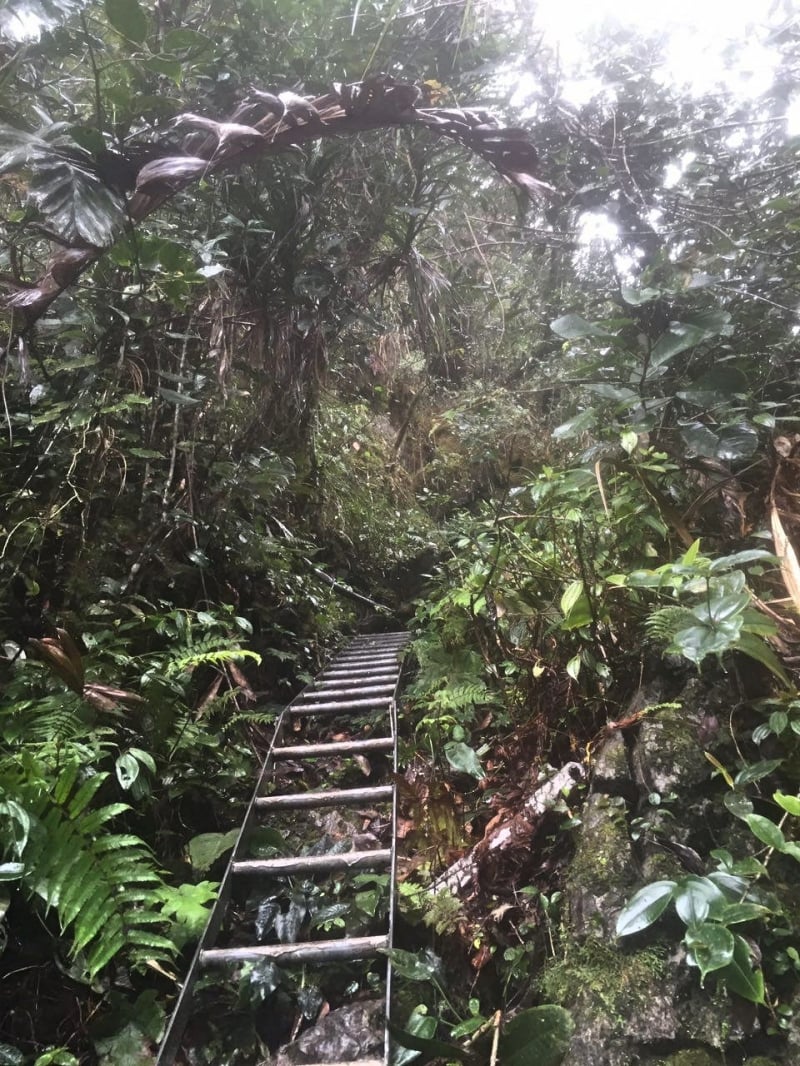
The final section of the climb consists of a series of ropes and ladders which need to be negotiated in the final push for the summit. Those who keep their nerve emerge on top of the mountain to be confronted by the sublime sight of the jagged shards of limestone protruding from the mountainside, continually disappearing and reappearing in the clouds of mist that drift by. For those able to reach the top, the reward is a few moments of rest and the chance to snap a few photos of the bizarre rock formations before starting the long, tough and slippery climb back down.
Most people who finish the climb probably look forward to the flight back to Miri and a few more days of good food as they rest their aching limbs before moving on to their next destination.
On to Sabah
If Sarawak is the place to go in search of tribes deep in the jungle as well as the home of two outstanding national parks, neighbouring Sabah is all about wildlife – plus a certain mountain and one of the world’s outstanding dive sites. The second part of this feature on East Malaysia will look at how Sabah differs from Sarawak and what you can expect to find in Malaysia’s easternmost state.





